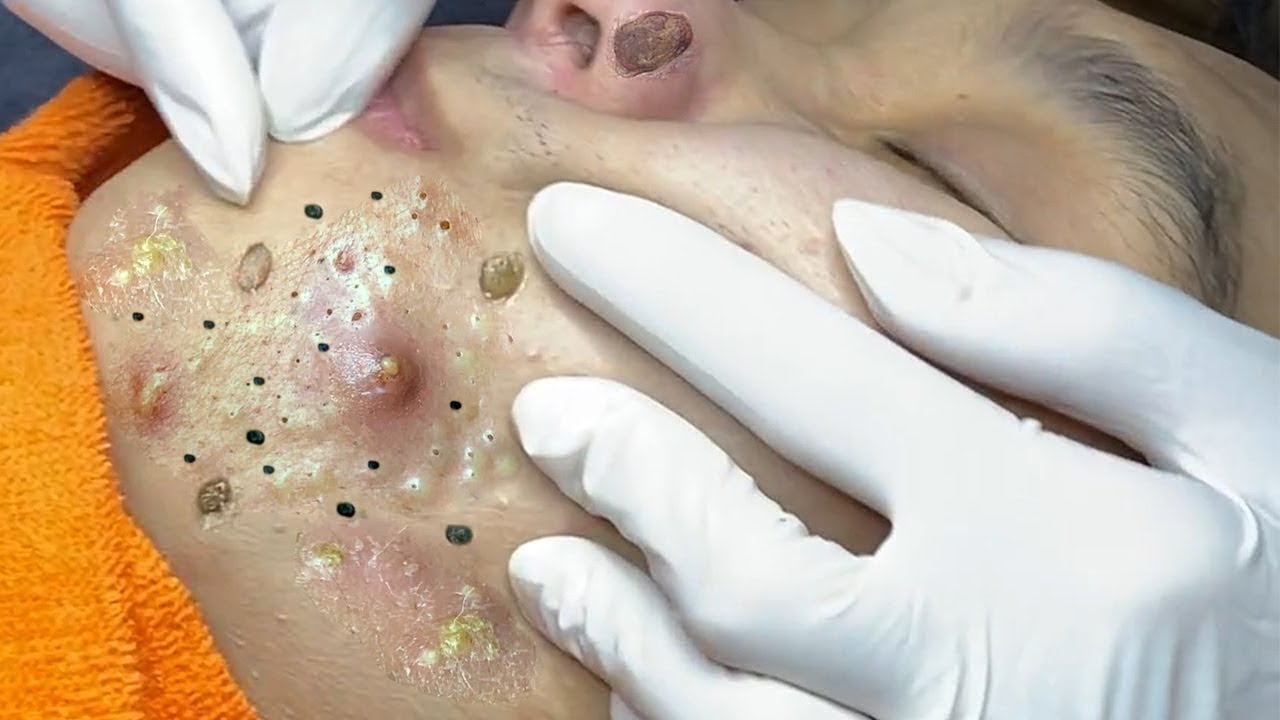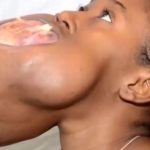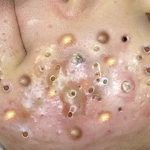Acne prone skin
Please scroll down to watch the video.👇👇
✅ How to Care for Acne-Prone Skin
(With Dermatologist-Backed Steps and Product Suggestions)
If you have acne-prone skin, your goal is to reduce breakouts, calm inflammation, and prevent clogged pores — all while not over-drying or irritating your skin.
🔬 What Is Acne-Prone Skin?
Acne-prone skin is more likely to develop pimples, blackheads, whiteheads, and cysts, due to:
-
Excess oil production
-
Clogged pores (dead skin + oil)
-
Inflammation
-
Bacteria (Cutibacterium acnes)
📖 Reference:
🧴 Step-by-Step Skincare Routine
🔹 1. Cleanser (Twice Daily)
-
Use a gentle, non-comedogenic cleanser (doesn’t clog pores).
-
Avoid scrubs — they can worsen inflammation.
Top Products:
-
CeraVe Foaming Facial Cleanser (great for oily skin)
-
La Roche-Posay Effaclar Gel (has zinc, purifying)
-
Neutrogena Oil-Free Acne Wash (with salicylic acid)
📖 Why? Cleansing removes excess oil, dirt, and bacteria that can clog pores.
🔹 2. Treatment Serum or Active Ingredient
This step targets acne directly.
Choose ONE active at a time to start:
| Ingredient | Function | Example Product |
|---|---|---|
| Salicylic Acid (BHA) | Unclogs pores, exfoliates inside the follicle | Paula’s Choice BHA Liquid |
| Benzoyl Peroxide | Kills acne-causing bacteria | PanOxyl 4% Wash, Clean & Clear Persa-Gel 10 |
| Niacinamide | Reduces inflammation & oil | The Ordinary Niacinamide 10% + Zinc 1% |
| Adapalene (retinoid) | Speeds skin turnover, prevents breakouts | Differin Gel (OTC retinoid) |
📖 Reference: Clinical Dermatology (2022) and AAD recommend topical retinoids as first-line therapy for comedonal and inflammatory acne.
🔹 3. Moisturizer (Yes, Even for Oily Skin)
Skipping moisturizer can trigger more oil production.
Look for:
-
Oil-free
-
Non-comedogenic
-
Lightweight gel or lotion formulas
Good Picks:
-
CeraVe PM Moisturizing Lotion
-
Neutrogena Hydro Boost Gel-Cream
-
La Roche-Posay Toleriane Double Repair
📖 Why? AAD confirms moisturizers improve acne medication tolerance and prevent irritation.
🔹 4. Sunscreen (Daily, AM)
Many acne treatments make your skin more sensitive to sunlight, which can worsen dark spots or cause irritation.
Best for acne-prone skin:
-
EltaMD UV Clear SPF 46 (contains niacinamide)
-
La Roche-Posay Anthelios Mineral SPF 50
-
Neutrogena Clear Face SPF 55
📖 Reference: Dermatologic Therapy Journal recommends broad-spectrum SPF for all acne patients using active topicals or retinoids.
🛑 What to Avoid for Acne-Prone Skin
-
Harsh scrubs (cause microtears + irritation)
-
Heavy oils or pore-clogging ingredients (like coconut oil, lanolin, isopropyl myristate)
-
Overwashing (strips skin, increases oil)
-
Fragrances (can irritate sensitive, inflamed skin)
📖 Tip: Check labels for “non-comedogenic” and avoid products with alcohol denat. in the top ingredients.
🧠 Lifestyle & Habits
✅ Helpful:
-
Use a clean towel and pillowcase every few days
-
Avoid touching your face
-
Disinfect phone screen
-
Manage stress (stress raises cortisol → more breakouts)
❌ Not Helpful:
-
Picking or popping pimples (increases scarring risk)
-
Trying too many new products at once
🗓️ Timeline to Expect Results
| Timeframe | What Happens |
|---|---|
| 1–2 weeks | Skin may purge (mild flare-up), especially with retinoids |
| 4–6 weeks | Active breakouts reduce, skin begins to smooth |
| 8–12 weeks | Significant improvement in texture and fewer breakouts |
📖 Reference: Journal of Clinical and Aesthetic Dermatology (2020): Retinoids show visible acne reduction in 6–12 weeks with consistent use.
Would you like a product routine tailored to:
-
Your skin type (dry, oily, combo)?
-
Specific acne type (blackheads, hormonal, cystic)?
-
Or a budget-friendly plan?
Let me know and I can customize it for you.
Caring for acne-prone skin involves a consistent, gentle skincare routine, informed by dermatological guidance. Here’s a detailed, evidence-based regimen to help manage and reduce acne breakouts:
🧼 Step 1: Gentle Cleansing (Twice Daily)
Use a mild, non-comedogenic cleanser to remove excess oil and impurities without irritating the skin.
Recommended Products:
-
CeraVe Hydrating Facial Cleanser
-
La Roche-Posay Effaclar Purifying Foaming Gel
Note: Avoid harsh scrubs or abrasive tools, as they can exacerbate acne.
🧴 Step 2: Targeted Acne Treatments
Incorporate active ingredients known to combat acne:
-
Salicylic Acid (BHA): Helps unclog pores and reduce inflammation.
-
The Ordinary Salicylic Acid 2% Solution
-
-
Benzoyl Peroxide: Kills acne-causing bacteria.
-
PanOxyl Acne Foaming Wash 4%
-
-
Retinoids (e.g., Adapalene): Promote cell turnover and prevent clogged pores.
-
Differin Gel (Adapalene 0.1%)
-
Note: Introduce one active ingredient at a time to monitor skin response.
💧 Step 3: Moisturizing
Even oily or acne-prone skin requires hydration to maintain a healthy barrier.
Recommended Products:
-
Neutrogena Hydro Boost Gel-Cream
-
CeraVe PM Facial Moisturizing Lotion
Note: Choose non-comedogenic, oil-free moisturizers to prevent pore clogging.
🌞 Step 4: Sun Protection
Daily use of sunscreen protects the skin and prevents post-acne hyperpigmentation.
Recommended Products:
-
EltaMD UV Clear Broad-Spectrum SPF 46
-
La Roche-Posay Anthelios Clear Skin SPF 60
Note: Opt for broad-spectrum, non-comedogenic sunscreens.
🛑 Habits to Avoid
-
Over-washing or scrubbing the skin.
-
Using alcohol-based or fragranced products.
-
Popping or picking at pimples.
-
Skipping sunscreen.
Note: These habits can worsen acne or delay healing.
🕒 Consistency is Key
Improvements in acne may take several weeks. Consistency in your skincare routine is essential for effective results.


